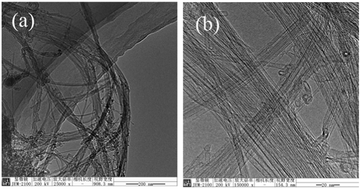Bistable electrical switching and nonvolatile memory effect in carbon nanotube–poly(3,4-ethylenedioxythiophene):poly(styrenesulfonate) composite films
Abstract
The electrical conductance switching behavior and nonvolatile memory effects in poly(3,4-ethylenedioxythiophene):poly(styrenesulfonate) PEDOT:PSS and single-wall carbon nanotubes (SWCNTs) composite thin films have been investigated. The effect of doping level on electrical conductance switching behavior of an indium tin oxide/PEDOT:PSS + SWCNTs/aluminum (ITO/PEDOT:PSS + SWCNTs/Al) sandwich structure has been reported. The ITO/(PEDOT:PSS + SWCNTs)/Al devices show current bistability. Moreover, the ON/OFF state current ratio is in an extent of 102–104. The OFF state current increased with the decreasing SWCNTs content in the composite film, and the ON/OFF state current ratio of the device increases with the increase in SWCNTs content of the composite film. Thus, by varying the doping level of SWCNTs in PEDOT:PSS composite thin films, the electrical conductance switching behavior of ITO/PEDOT:PSS + SWCNTs/Al can be modulated in a controlled manner.


 Please wait while we load your content...
Please wait while we load your content...